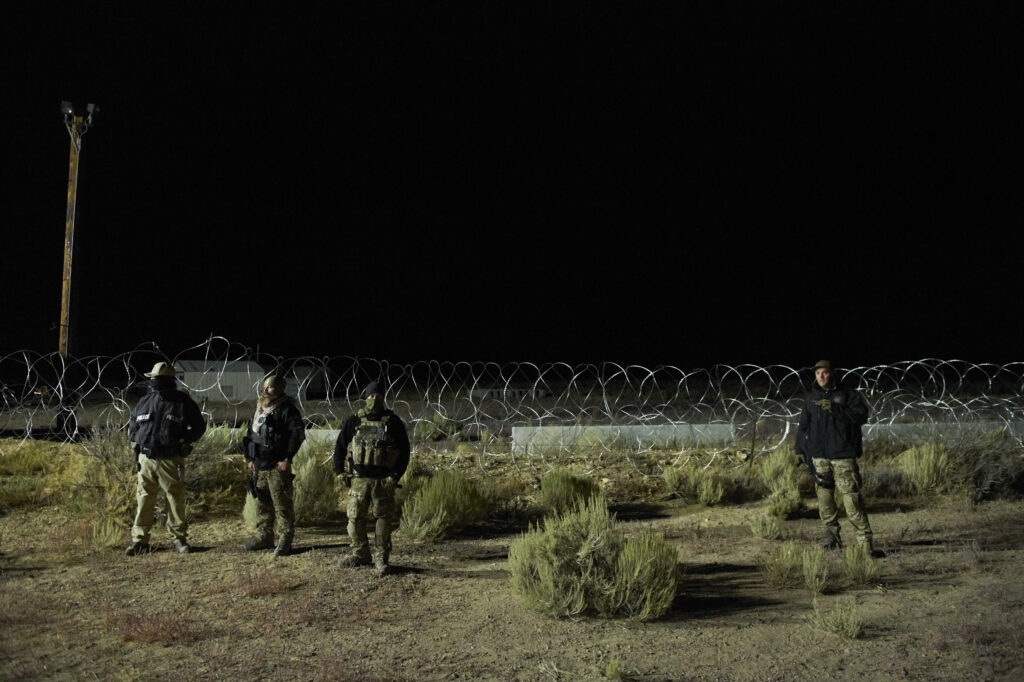Netflix’s Trainwreck docuseries has unpacked some of the most bizarre and disastrous moments in recent memory, from the chaos of the Carnival “Poop Cruise,” to the rise and fall of Toronto mayor Rob Ford, the Balloon Boy hoax and the tragic Astroworld Festival. Now, in what appears to be the final announced installment, Trainwreck turns its lens on Storm Area 51, the meme-turned-movement that began as a Facebook joke and ended with lawsuits, lost money and thousands of people descending on a remote Nevada town. This episode digs into how a single online post became an accidental mass gathering, leaving behind a trail of broken promises, brand deals and one very frustrated motel owner in Rachel, Nevada.
Why is Area 51 so secretive?
For decades, Area 51 has been one of the most secretive and mythologized military installations in the world. Located in the Nevada desert, the facility was established in the 1950s as a testing ground for cutting-edge military aircraft. The secrecy surrounding Area 51 was so intense that the U.S. government didn’t publicly acknowledge its existence until 2013, when the CIA released previously classified documents in response to a Freedom of Information Act (FOIA) request by the National Security Archive.
Strict military control, remote desert terrain and complete radio silence have only added to its mystique. The facility is surrounded by warning signs, surveillance cameras and armed guards, with no public access allowed. The intense secrecy, combined with a lack of official transparency for decades, has fueled widespread speculation about extraterrestrial technology, time travel experiments and government cover-ups.
Is Area 51 still guarded?

Area 51 remains one of the most heavily guarded military sites in the United States. Despite public fascination and growing pop culture awareness, security around the base is as intense as ever. Space reports that, in addition to ground patrols, the area is protected by motion sensors, high-tech surveillance cameras, buried sensors and airspace restrictions. The surrounding airspace, designated R-4808N, is a no-fly zone, off-limits to civilian and even most military aircraft without explicit authorization.
Can you visit Area 51?
The U.S. government has made it strictly illegal to enter the boundaries of Area 51, which is located within the Nevada Test and Training Range. The base is completely off-limits to the public, and even standing near the border can result in questioning, fines or arrest. No tours are offered, and no public access is allowed, not even to military personnel without specific clearance.
You can visit nearby areas like Rachel, the Extraterrestrial Highway and Tikaboo Peak, which offers a distant view of the base. Tourist spots like the Little A’Le’Inn cater to UFO enthusiasts, but anyone venturing too close to the base risks fines, arrest or surveillance.
How much did ‘Storm Area 51’ cost, and who got paid?
When the satirical Facebook event “Storm Area 51, They Can’t Stop All of Us” went viral in 2019, it drew over two million RSVPs and created a logistical nightmare for organizers, small towns and law enforcement. What started as a joke quickly morphed into a real-world event, with very real costs. As People notes, the Netflix documentary reveals that the U.S. military spent an estimated $11 million in preparation for what could’ve been the area’s biggest disaster.
Matty Roberts, the 20-year-old who created the original Facebook event, never intended to host an actual festival. Once it blew up, he scrambled to turn it into a legitimate gathering—AlienStock—but quickly became overwhelmed. According to Roberts and his team, they barely made any profit, and may have lost money due to security, venue and legal expenses.
Rachel, Nevada, population ~50, was completely unprepared. The town’s only business, Little A’Le’Inn, tried to accommodate the crowds, but faced food shortages, bathroom problems and no cell service. The influx of thousands of visitors caused strain, and few local vendors reported significant profit. Many had over-prepared or couldn’t meet the demand due to poor infrastructure.
How brand sponsorships helped save the event
Bud Light was the most visible sponsor, launching a special “Area 51” edition beer can and promising to “free the aliens” with free Bud Light if any escaped. The campaign gained major media traction and helped fund the Las Vegas Area 51 Celebration after organizer Matty Roberts backed out of the Rachel event.
Pornhub not only leaned into the alien meme with themed content and social media stunts, but they also donated $70,000 to help fund the festival in Rachel. Connie West, proprietor of the Little A’Le’Inn, filed a lawsuit against Storm Area 51 organizers, including Matty Roberts and Hidden Sound LLC—claiming breach of contract, false statements, business disparagement, trademark infringement and more.
West alleges Pornhub committed to donate $70,000 to fund the Alienstock festival, but she never received a dime. Her lawsuit states: “Sponsorship funds provided by Pornhub… were available… toward Alienstock expenses, but none of those funds were disbursed.”
Frequently Asked Questions
Is Area 51 radioactive?
While there’s no official confirmation that Area 51 is radioactive, its proximity to historic nuclear test sites in Nevada means there may be residual environmental contamination in surrounding areas. However, no evidence suggests that the base itself is unsafe due to radiation.
Can you fly over Area 51?
No. Area 51 is located within a restricted airspace known as R-4808N, which is closed to all civilian and commercial flights. Only authorized military and government personnel can legally fly over the area. This tight airspace control is one reason the base has remained so elusive.
Is it illegal to take pictures of Area 51?
Photographing the base from public land is technically not illegal, but since most of the base is hidden from view and patrolled rigorously, it’s difficult to capture anything significant. However, flying drones or using zoom lenses to peer into restricted areas can result in confiscation of equipment or legal consequences.
